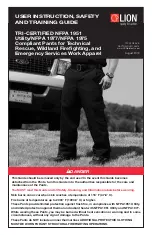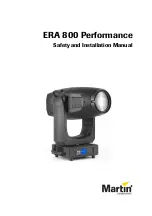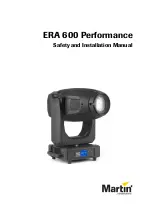
7
3.
SAFETY CHECKLIST
Do not use this NFPA 1951 Utility/NFPA 1977/
NFPA 1975 Tri-Certified Pants until you have
checked “YES” to the following:
1.
Have you completed a formal training course
in Technical Rescue and/or Wildland
Firefighting techniques, the proper use of
Technical Rescue and/or Wildland Firefighting
equipment and NFPA 1951 Utility/NFPA
1977/NFPA 1975 Tri-Certified Pants?
Yes
No
2.
Have you read and understood all the
instructions and warnings throughout this
Guide as well as all the safety, cleaning and
information labels on the Pants?
Yes
No
3.
Will you regularly inspect your Pants inside
and out for any tears, holes, thin spots,
worn areas, color change, dirt, contaminants,
leaks, embrittlement, or any other conditions
discussed in Section 6 of this Guide?
Yes
No
4.
Have you studied the limitations of your Pants as described throughout
this Guide?
Yes
No
5.
Have you checked to make sure that your Pants fits you properly in accordance with
Section 8 of this Guide?
Yes
No
6.
Have you, your safety officer, or another appropriate person made plans to ensure
that your Pants is used, inspected, maintained, stored, and retired according to
instructions in this Guide?
Yes
No
7.
Do you understand that when your skin reaches a temperature of 118º F, you will be
burned, and that you may not feel a heat sensation or pain while wearing your Pants,
or receive damage to your Pants prior to being burned?
Yes
No
8.
Have you read, do you understand, and do you agree to assume the risks and
responsibilities listed in the Personal Responsibility Code? See
FIG. 1
and back cover
of this Guide.
Yes
No
If you answered
NO
to any of the questions,
DO NOT WEAR THIS GARMENT
until you have
read the appropriate sections in this guide and have been properly trained by
qualified instructors.
PERSONAL RESPONSIBILITY CODE
The member companies of FEMSA that provide
emergency response equipment and services want
responders to know and understand the following:
1. Firefighting and Emergency Response are inherently
dangerous activities requiring proper training in their
hazards and the use of extreme caution at all times.
2. It is your responsibility to read and understand any
user’s instructions, including purpose and
limitations, provided with any piece of equipment you
may be called upon to use.
3. It is your responsibility to know that you have been
properly trained in Firefighting and/or Emergency
Response and in the use, precautions, and care of
any equipment you may be called upon to use.
4. It is your responsibility to be in proper physical
condition and to maintain the personal skill level
required to operate any equipment you may be called
upon to use.
5. It is your responsibility to know that your equipment
is in operable condition and has been maintained in
accordance with the manufacturer’s instructions.
6. Failure to follow these guidelines may result in death,
burns or other severe injury.
Fire and Emergency Manufacturers and Services Association, Inc.
P.O. Box 147, Lynnfield , MA 01940 www.FEMSA.org
Copyright 2006 FEMSA. All Rights Reserved
FIG. 1 Personal Responsibility Code.
Also shown on back cover of
this Guide.
Содержание NFPA 1975
Страница 22: ...22 NOTES...








































